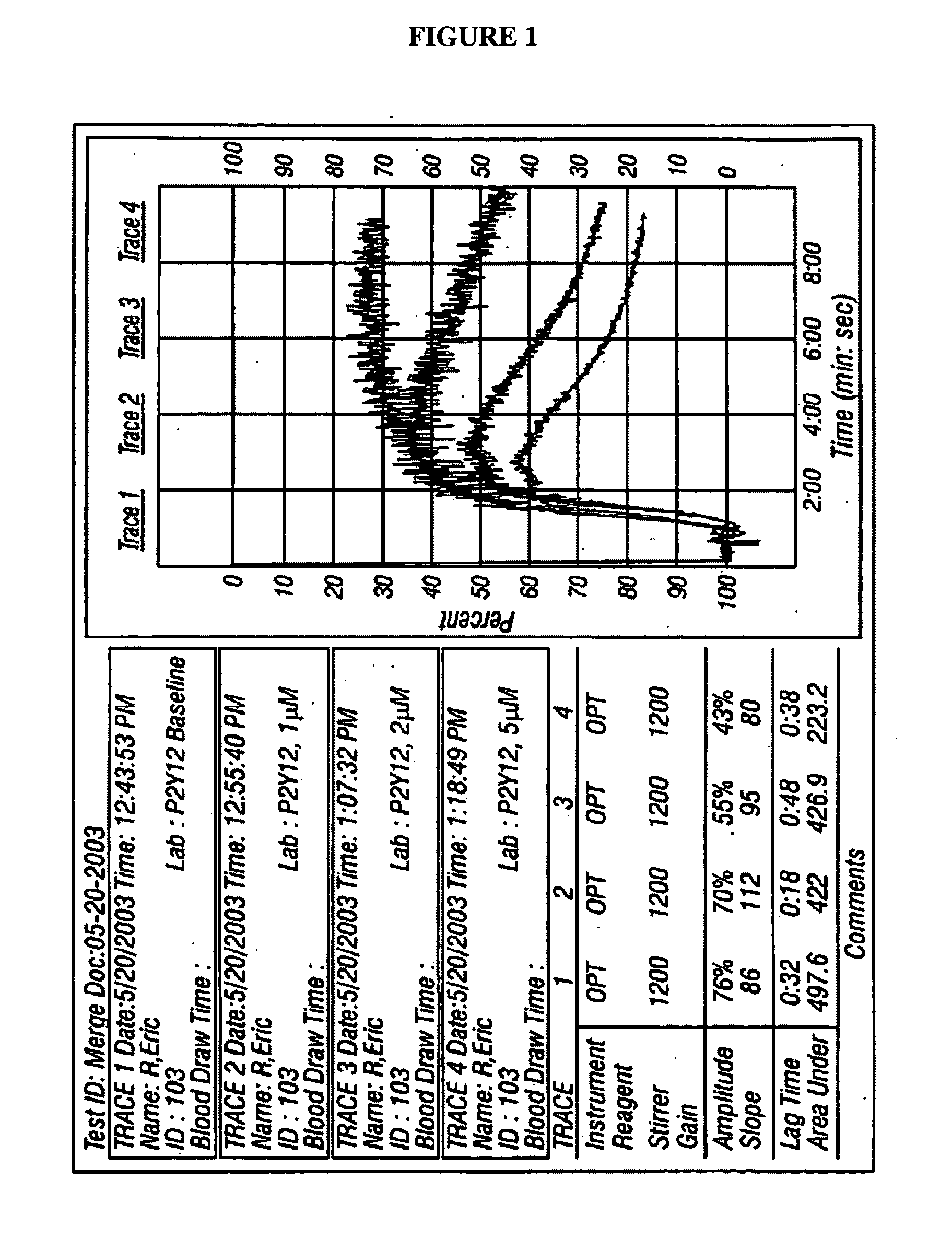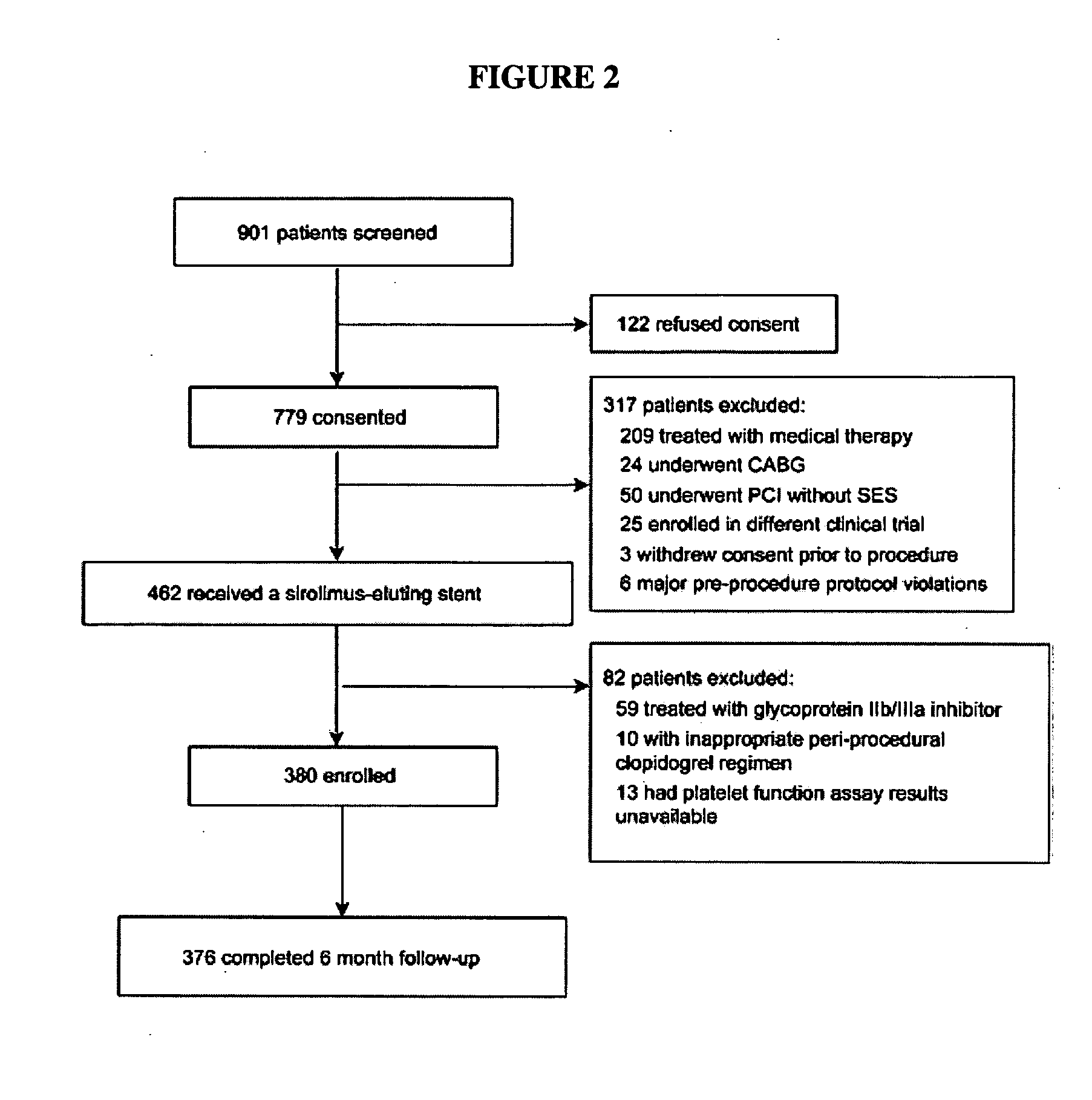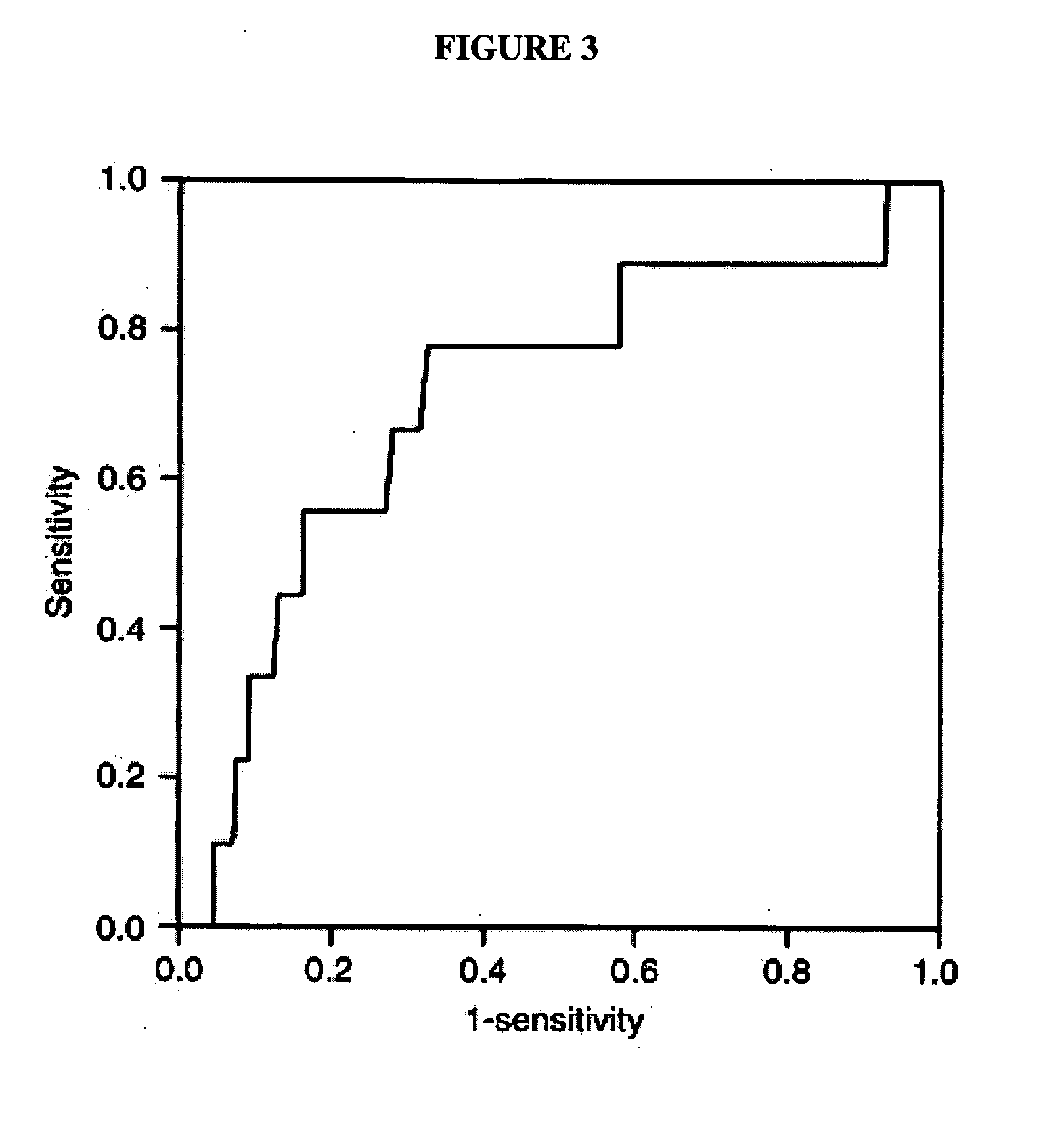Methods for measuring platelet reactivity of individuals treated with drug eluting stents
a technology for elcosanoid stents and platelet aggregation, which is applied in the field of diagnostic assays, can solve the problems of inability to meet the needs of patients, inability to detect platelet aggregation, so as to improve the signal transduction pathway, reduce the ability to form platelet thrombosis, and improve the effect of coagulation
- Summary
- Abstract
- Description
- Claims
- Application Information
AI Technical Summary
Benefits of technology
Problems solved by technology
Method used
Image
Examples
example 1
[0076]Dose response testing was performed with ADP (Chrono-log Corp., Havertown, Pa.) and PGE1 (SIGMA) at 20 μM and 22 nM final concentrations respectively. ADP was diluted in Hepes / Saline, pH 7.4 buffer to a final concentration of 200 μM prior to use on the aggregometer. PGE1 was diluted in Hepes / Saline, pH 7.4 buffer to a final concentration of 220 nM prior to use on the aggregometer. A P2Y12 receptor antagonist was diluted in DMF to final concentrations of 1 mM, 2 mM and 5 mM.
[0077]Five microliters of the diluted P2Y12 antagonist were spiked into 5 mL whole blood. Samples were inverted and incubated for one hour at room temperature. The whole blood baseline sample did not receive any additive. Once incubation was complete, whole blood samples were spun at 1500 rpm for 15 minutes for platelet rich plasma (PRP) and 3500 rpm for 15 minutes for platelet poor plasma (PPP). Platelet count was adjusted to approximately 250,000 / μL for each sample using PPP.
[0078]For aggregometry, 450 μL ...
example 2
[0081]A study of PCI patients was conducted. The patients selected had at least one of the following, at least one lesion ≧50% diameter stenosis requiring PCI, a reference vessel diameter between 2.25 and 4.0 mm, target lesion located within a native coronary artery or bypass graft that was either de novo or restenotic and no known allergy to aspirin, clopidogrel, or any component of an DES.
[0082]Whole blood was obtained from the side port of the arterial sheath prior to anticoagulant or anti-thrombin therapy and by phlebotomy 12 hours post-PCI. The inhibitory effect of clopidogrel was measured using the VerifyNow™ P2Y12 assay (Accumetrics, Inc., San Diego, Calif.). The percentage inhibition induced by clopidogrel in patients with a baseline sample prior to clopidogrel exposure was calculated using the formula: 1−(PRU post-clopidogrel / PRU baseline)×100.
[0083]If the post-treatment ADP-induced aggregation was greater after clopidogrel than at baseline, the percentage inhibition was co...
example 3
[0099]Another study was conducted to determine whether platelet reactivity in patients on clopidogrel therapy as assessed by the VerifyNow™ P2Y12 assay (Accumetrics, Inc., San Diego, Calif.) is associated with post discharge outcomes, including stent thrombosis, after drug-eluting stent (DES) implantation. This study was published in Price, et al., Eur. Heart J. (2008) 29(8):992-1000, which is fully incorporated herein.
[0100]Patients were eligible for enrolment if they had at least one lesion ≧50% diameter stenosis requiring PCI and had no known allergy to aspirin, clopidogrel, or a sirolimus-eluting stent (SES). Patients on clopidogrel therapy or who were clopidogrel naïve were eligible for inclusion. However, to ensure that those patients on clopidogrel therapy prior to the procedure were optimally and consistently treated at the time of platelet function assessment, only those patients who had received a loading dose of 600 mg at least 12 h prior to the procedure or were on a mai...
PUM
| Property | Measurement | Unit |
|---|---|---|
| temperature | aaaaa | aaaaa |
| diameter | aaaaa | aaaaa |
| density | aaaaa | aaaaa |
Abstract
Description
Claims
Application Information
 Login to View More
Login to View More - R&D
- Intellectual Property
- Life Sciences
- Materials
- Tech Scout
- Unparalleled Data Quality
- Higher Quality Content
- 60% Fewer Hallucinations
Browse by: Latest US Patents, China's latest patents, Technical Efficacy Thesaurus, Application Domain, Technology Topic, Popular Technical Reports.
© 2025 PatSnap. All rights reserved.Legal|Privacy policy|Modern Slavery Act Transparency Statement|Sitemap|About US| Contact US: help@patsnap.com



